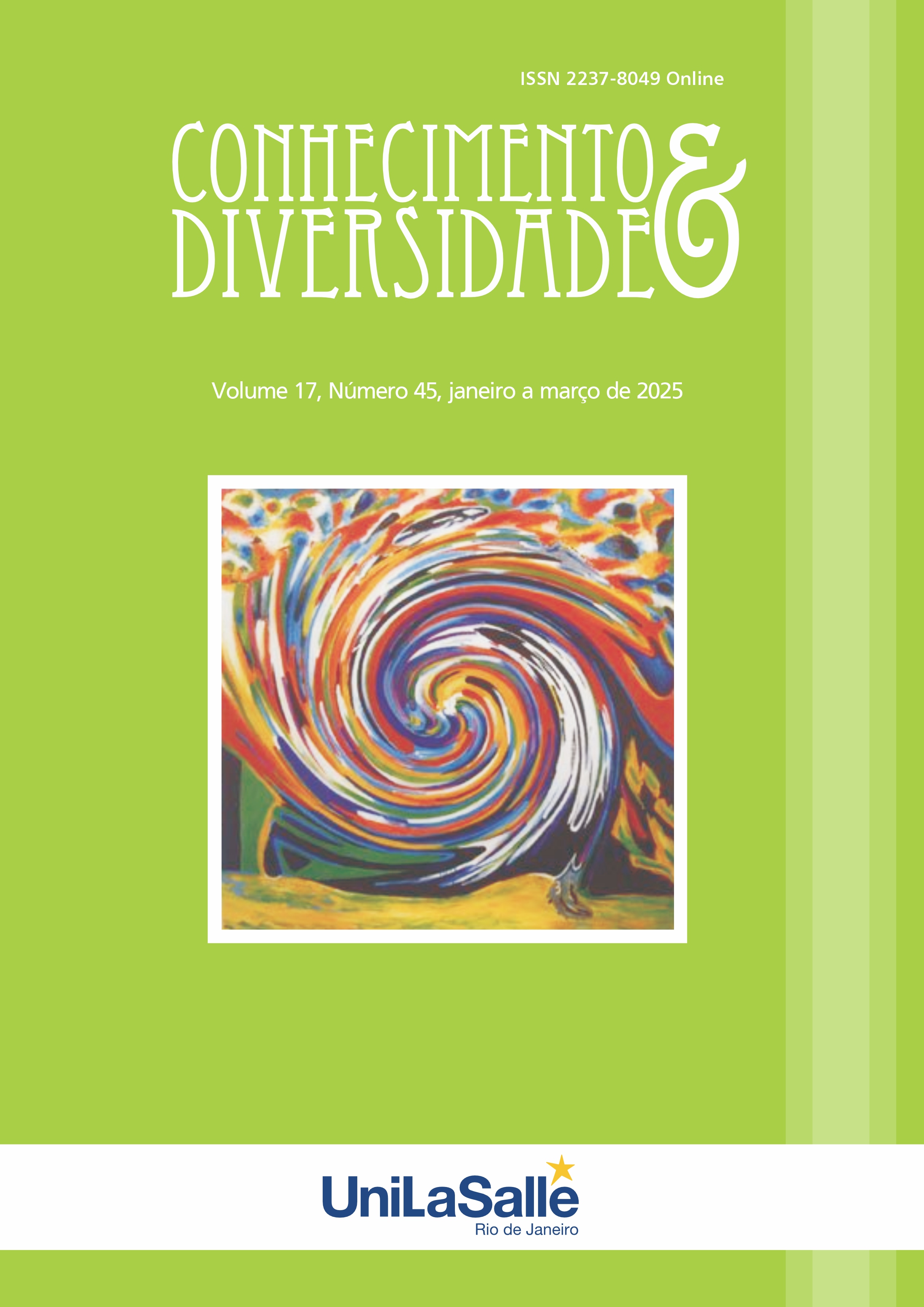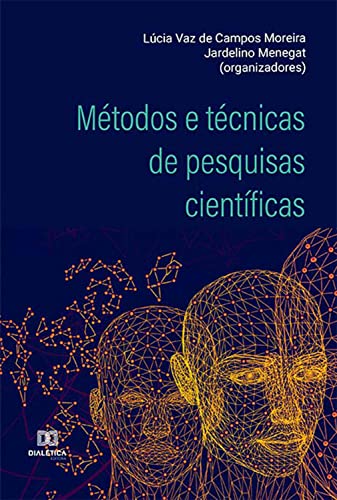APRIMORAMENTO DO ENSINO DE FÍSICA
O IMPACTO DOS SIMULADORES DE COMPUTADOR NO DESEMPENHO E NA COMPREENSÃO CONCEITUAL DOS ALUNOS
DOI:
https://doi.org/10.18316/rcd.v17i45.12486Palavras-chave:
Ly - Dinastias Tran, ideologia humanística, Valores Educacionais, Dai Viet, VietnãResumo
Este estudo investiga as vantagens de incorporar simulações de computador, principalmente o simulador PhET, na instrução das leis de Newton em comparação com as abordagens de ensino convencionais. A pesquisa revelou que os alunos que se envolveram com o simulador apresentaram maior compreensão dos conceitos newtonianos. Além disso, os educadores observaram a facilidade de uso e a eficácia do simulador na transmissão da mecânica newtoniana. A pesquisa envolveu o exame de 120 alunos de duas escolas no Marrocos, sendo que um grupo utilizou simulações computadorizadas e o outro aderiu aos métodos tradicionais de ensino. O ganho de aprendizado normalizado foi calculado para cada grupo a fim de avaliar o impacto do aprendizado, demonstrando uma variação estatisticamente significativa a favor do grupo de simulação. Essas descobertas ressaltam a eficácia das simulações de computador para reforçar a compreensão conceitual das leis de Newton pelos alunos.
Os professores expressaram satisfação com o simulador PhET, destacando sua interface fácil de usar e sua eficácia pedagógica. Ao se envolverem com a simulação, os alunos puderam visualizar e experimentar os princípios abstratos das leis de Newton de forma tangível, promovendo assim uma melhor retenção do conhecimento. Em conclusão, este estudo ressalta os méritos da integração de simulações de computador, principalmente o simulador PhET, no ensino das leis de Newton. Esses resultados defendem o uso de ferramentas digitais para aprimorar o ensino de ciências e fortalecer a compreensão de conceitos científicos fundamentais. As simulações computadorizadas podem ser uma abordagem pedagógica inovadora e eficiente para ensinar as leis de Newton e outros princípios científicos. Ao aproveitar a tecnologia de simulação, os educadores podem criar experiências de aprendizado envolventes e interativas que facilitam a compreensão mais profunda e a retenção dos princípios científicos entre os alunos.
Referências
Alabidi, S., Alarabi, K., Tairab, H., Alamassi, S., & Alsalhi, N. R. (2023). The effect of computer simulations on students’ conceptual and procedural understanding of Newton’s second law of motion. Eurasia Journal of Mathematics, Science and Technology Education, 19(5), em2259. https://doi.org/10.29333/ejmste/13140
Atasoy, Ş., & Akdeniz, A. R. (2007). Newton’un Hareket Kanunları konusunda kavram yanılgılarını belirlemeye yönelik bir testin geliştirilmesi ve uygulanması. Journal of Turkish Science Education, 4(1), 45–59. http://www.tused.org/index.php/tused/article/download/658/564
Bayrak, B. (2007). TO COMPARE THE EFFECTS OF COMPUTER BASED LEARNING AND THE LABORATORY BASED LEARNING ON STUDENTS’ ACHIEVEMENT REGARDING ELECTRIC CIRCUITS. Turkish Online Journal of Educational Technology, 6(1), 15–24. http://files.eric.ed.gov/fulltext/ED500072.pdf
Bertacchini, F., Bilotta, E., Caldarola, F., & Pantano, P. (2018). The role of computer simulations in learning analytic mechanics towards chaos theory: a course experimentation. International Journal of Mathematical Education in Science and Technology, 50(1), 100–120. https://doi.org/10.1080/0020739x.2018.1478134
Bouffy, H. D. E. (2022). L’intégration des TIC dans la formation des enseignants au Maroc: analyse documentaire des réformes éducatives The use of TIC in teachers training in Morocco: documentary analysis of educational reforms. HAL (Le Centre Pour La Communication Scientifique Directe). https://doi.org/10.5281/zenodo.7158416
Boumediane, M. B., Benabdelouahab, F., & Idrissi, R. J. (2022). TEACHING OF PHYSICAL SCIENCES IN MOROCCAN COLLEGES: THE OBSTACLES AND DIFFICULTIES ENCOUNTERED. 14(1).
Boumediane, M. B., Janati-Idrissi, R., & Benabdelouhab, F. (2023). PROFILING OF MOROCCAN HIGH SCHOOL PHYSICAL SCIENCE TEACHERS FOR IN-SERVICE TRAINING IN ICT: A CROSS-SECTIONAL EXPLORATORY STUDY. International Journal of Education, Technology and Science, 3(4), Article 4.
Cabedo, L., Royo, M., Miravet, L. M., & Guraya, T. (2018). University Social Responsibility towards Engineering Undergraduates: The Effect of Methodology on a Service-Learning Experience. Sustainability, 10(6), 1823. https://doi.org/10.3390/su10061823
Chekour, M. (2015). Les facteurs influençant l’acquisition des concepts en électricité. Cas des lycéens marocains. Adjectif.net. https://adjectif.net/spip.php?article354
D’Angelo, C., Rutstein, D. W., Harris, C., Bernard, R., Borokhovski, E., & Haertel, G. D. (2014). Simulations for STEM learning: Systematic review and meta-analysis. SRI Education. https://experts.illinois.edu/en/publications/simulations-for-stem-learning-systematic-review-and-meta-analysis
De Freitas, S. I. (2006). Using games and simulations for supporting learning. Learning, Media and Technology, 31(4), 343–358. https://doi.org/10.1080/17439880601021967
De Jong, T., Linn, M. C., & Zacharia, Z. C. (2013). Physical and virtual laboratories in science and engineering education. Science, 340(6130), 305–308. https://doi.org/10.1126/science.1230579
Deliktaş, B. (2011). Computer technology for enhancing teaching and learning modules of engineering mechanics. Computer Applications in Engineering Education, 19(3), 421–432. https://doi.org/10.1002/cae.20321
Droui, M., & El Hajjami, A. (2015). Simulation et apprentissage par investigation [Article]. In www.est-usmba.ac.ma (Vol. 1). http://www.est-usmba.ac.ma/conferences/apel2015/proceeding/docs/E15C08.pdf
Droui, M., El Hajjami, A., Bouklah, M., & Zouirech, S. (2013). Impact de l’apprentissage par problème sur la compréhension conceptuelle de la mécanique newtonienne. EpiNet, 157. https://edutice.hal.science/edutice-00940669/file/a1309d.htm
El HASSOUNY, E. H., KADDARI, F., Abdelrhani, E., & Habibi, I. (2015). LOGICIEL DE SIMULATION “DYNAMIC” ET APPRENTISSAGE DE LA MECANIQUE NEWTONIENNE EN DEUXIEME ANNEE BACCALAUREAT. American Journal of Innovative Research and Applied Sciences, 2(5), 210–220. https://www.american-jiras.com/El%20Hassan%20%20ManuscriptRef.2-ajiras050616.pdf
Gokhale, A. A. (1996). Effectiveness of computer simulation for enhancing higher order thinking. Journal of Industrial Teacher Education, 33(4), 36–46. https://eric.ed.gov/?id=EJ527047
Grimes, D., & Warschauer, M. (2008). Learning with Laptops: A Multi-Method Case Study. Journal of Educational Computing Research, 38(3), 305–332. https://doi.org/10.2190/ec.38.3.d
Hake, R. (1998). Interactive-engagement versus traditional methods: A six-thousand-student survey of mechanics test data for introductory physics courses. American Journal of Physics, 66(1), 64–74. https://doi.org/10.1119/1.18809
Jacobs, G. M., Renandya, W. A., & Power, M. (2016). Simple, powerful strategies for student centered learning. In Springer briefs in education. https://doi.org/10.1007/978-3-319-25712-9
Jimoyiannis, A., & Komis, V. (2001). Computer simulations in physics teaching and learning: a case study on students’ understanding of trajectory motion. Computers & Education, 36(2), 183–204. https://doi.org/10.1016/s0360-1315(00)00059-2
Kane, P. S. (2011). Les pratiques expérimentales au lycée- Regards croisés des enseignants et de leurs élèves. Radisma, 7. http://www.fastef.ucad.sn/articles/saliou/article2_pratiques.pdf
Karsenti, T., & Gauthier, C. (2006). Les TIC bouleversent-elles réellement le travail des enseignants? Formation Et Profession, Le Bulletin Du CRIFPE, 12(3). http://www.thierrykarsenti.org/pdf/scholar/ARP-karsenti-32-2006.pdf
e gouvernement du Manitoba. (2013). Physique 12e année Programme d’études: document de mise en œuvre. In www.mtbb.mb.ca (No. 98284). Centre des manuels scolaires du Manitoba. https://www.edu.gov.mb.ca/m12/frpub/ped/sn/phys/dmo_12/pdf/doc_complet.pdf
Liao, Y., & Liu, S. (2020). MechGames: Teaching and Learning Dynamics through Computer Simulations and Games. American Society for Engineering Education. https://cms.jee.org/mechgames-teaching-and-learning-dynamics-through-computer-simulations-and-games
Lin, X. Y., Yang, W., Wu, L., Li-Fen, Z., Wu, D., & Hui, L. (2020). Using an Inquiry-Based Science and Engineering program to promote science knowledge, Problem-Solving skills and Approaches to learning in preschool children. Early Education and Development, 32(5), 695–713. https://doi.org/10.1080/10409289.2020.1795333
Macabebe, E. Q. B., Culaba, I. B., Maquiling, J. T., Paosawatyanyong, B., & Wattanakasiwich, P. (2010). Pre-conceptions of Newton’s laws of motion of students in Introductory Physics. AIP Conference Proceedings. https://doi.org/10.1063/1.3479843
Mahdi, K., Laafou, M., & Janati-Idrissi, R. (2018). L’impact de la formation continue à distance des professeurs de physique aux logiciels de simulation informatique. JOURNAL FOR EDUCATORS, TEACHERS AND TRAINERS, 9(1), 27–41. https://jett.labosfor.com/index.php/jett/article/view/179/92
Mico, S., Mandili, J., Tahiri, V., & Muco, R. (Eds.). (2010). Computer simulations enhance qualitative meaning of the Newton’s second law. GIREP-ICPE-MPTL Conference 2010. https://www.univ-reims.fr/site/evenement/girep-icpe-mptl-2010-reims-international-conference/gallery_files/site/1/90/4401/22908/29678/29698.pdf
Mirana, V. P. (2016). Effects of Computer Simulations and Constructivist Approach on Students’ Epistemological Beliefs, Motivation and Conceptual Understanding in Physics. Social Sciences, Humanities and Education, 89–93. https://doi.org/10.17758/uruae.uh0516087
Obaidat, I. M., & Malkawi, E. (2009). The grasp of Physics Concepts of motion: identifying particular patterns in students’ thinking. International Journal for the Scholarship of Teaching and Learning, 3(1). https://doi.org/10.20429/ijsotl.2009.030119
Perkins, K. K., Adams, W. K., Dubson, M., Finkelstein, N. D., Reid, S., Wieman, C., & LeMaster, R. (2005). PHET: Interactive Simulations for Teaching and Learning Physics. The Physics Teacher, 44(1), 18–23. https://doi.org/10.1119/1.2150754
Quels apports du codage des données qualitatives? (2006). In C. Saubesty – Vallier (Ed.), Conférence Internationale de Management Stratégique, Annecy / Genève 13-16 Juin (15th ed., Vol. 2016). https://apprendre.auf.org/wp-content/opera/13-BF-References-et-biblio-RPT-2014/Quels%20apports%20du%20codage%20des%20donn%C3%A9es%20qualitatives%20.pdf
Sağlam-Arslan, A., & Devecioğlu, Y. (2010a). Student teachers’ levels of understanding and model of understanding about Newton’s laws of motion. Asia-Pacific Forum on Science Learning and Teaching, 11(1). https://www.ied.edu.hk/apfslt/download/v11_issue1_files/arslan.pdf
Sağlam-Arslan, A., & Devecioğlu, Y. (2010b). Student teachers’ levels of understanding and model of understanding about Newton’s laws of motion. Asia-Pacific Forum on Science Learning and Teaching, 11(1). https://www.ied.edu.hk/apfslt/download/v11_issue1_files/arslan.pdf
Sari, D. P., Widodo, W., & Madlazim. (2021). Computer simulation feasibility for Newton’s law learning. Turkish Journal of Computer and Mathematics Education (TURCOMAT), 12(14), 4282–4291. https://www.turcomat.org/index.php/turkbilmat/article/view/11270
Şengüleç, Ö. A., & Azar, A. (2010). Computer-Assisted and Laboratory-Assisted Teaching Methods in Physics Teaching: the Effect on Student Physics Achievement and Attitude towards Physics. Eurasian Journal of Physics and Chemistry Education, 1(1), 43–50. http://www.eurasianjournals.com/index.php/ejpce/article/viewFile/613/pdf_104
Smetana, L. K., & Bell, R. L. (2012). Computer Simulations to Support Science Instruction and Learning: A critical review of the literature. International Journal of Science Education, 34(9), 1337–1370. https://doi.org/10.1080/09500693.2011.605182
Sornkhatha, P., & Srisawasdi, N. (2013). Supporting conceptual development in Newton’s laws of motion using an interactive computer-simulated laboratory environment. Procedia - Social and Behavioral Sciences, 93, 2010–2014. https://doi.org/10.1016/j.sbspro.2013.10.157
Srisawasdi, N. (2012). Student Teachers’ perceptions of Computerized Laboratory Practice for science Teaching: A Comparative analysis. Procedia - Social and Behavioral Sciences, 46, 4031–4038. https://doi.org/10.1016/j.sbspro.2012.06.192
White, H., & Sabarwal, S. (2014). Méthodes et modèles quasi expérimentaux. In www.unicef-irc.org/ (No. 8). Centre de recherche Innocenti de l’UNICEF. Retrieved November 20, 2023, from https://www.unicef-irc.org/publications/pdf/MB8FR.pdf
Downloads
Publicado
Edição
Seção
Licença
Copyright (c) 2025 Manar Ben Boumediane, Oumaima Azzi, Rachid Janati-Idrissi

Este trabalho está licenciado sob uma licença Creative Commons Attribution 4.0 International License.
Conforme recomendado pelo o Public Knowledge Project, a RCD adota para seus artigos uma licença CREATIVE COMMONS: Atribuição CC BY 4.0.
Esta licença permite que outros distribuam, remixem, adaptem e construam sobre o seu trabalho, mesmo comercialmente, desde que lhe dêem crédito pela criação original.
Esta é a licença mais adequada oferecida.
Recomendado para a máxima divulgação e uso de materiais licenciados.



